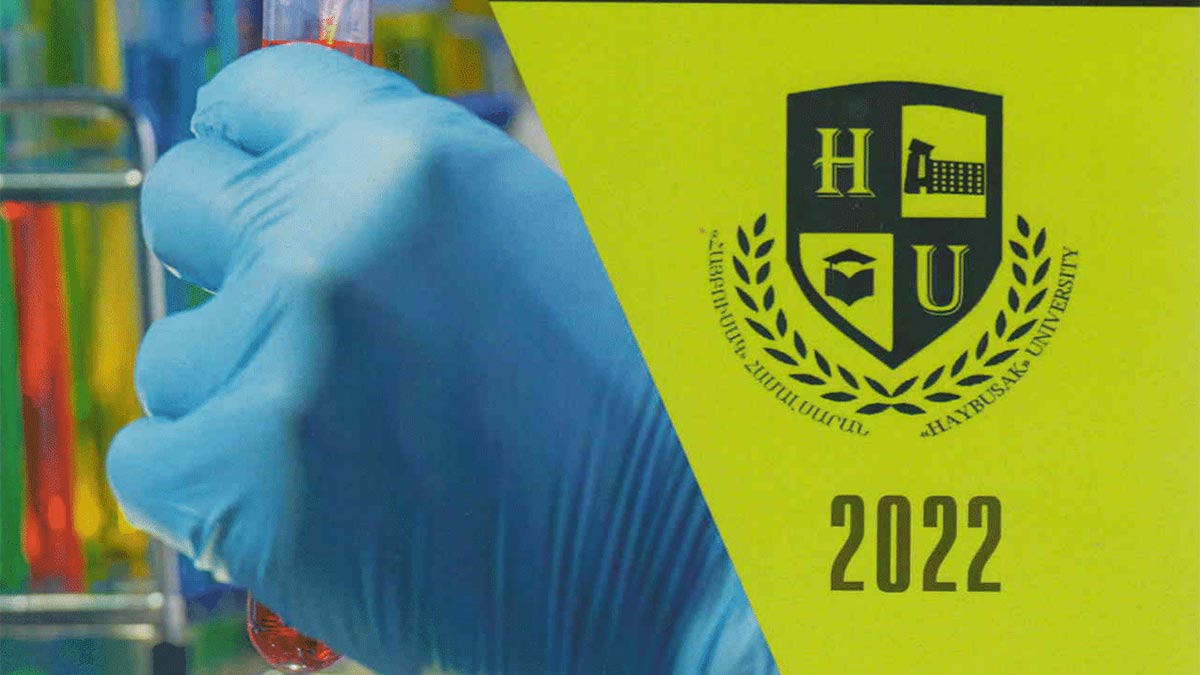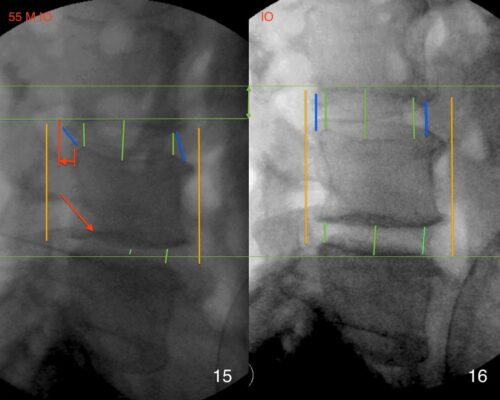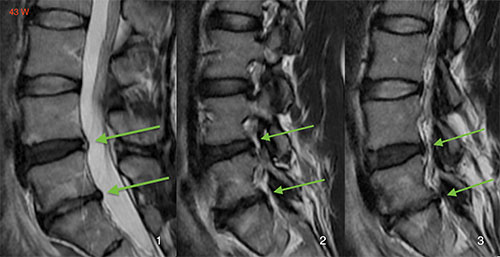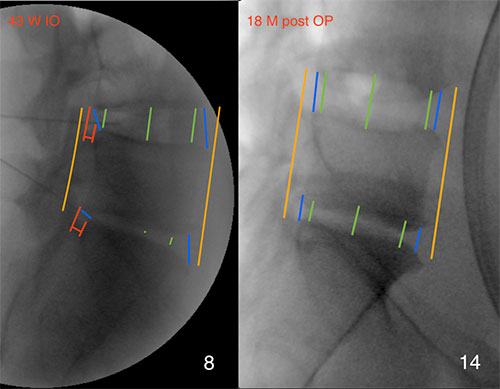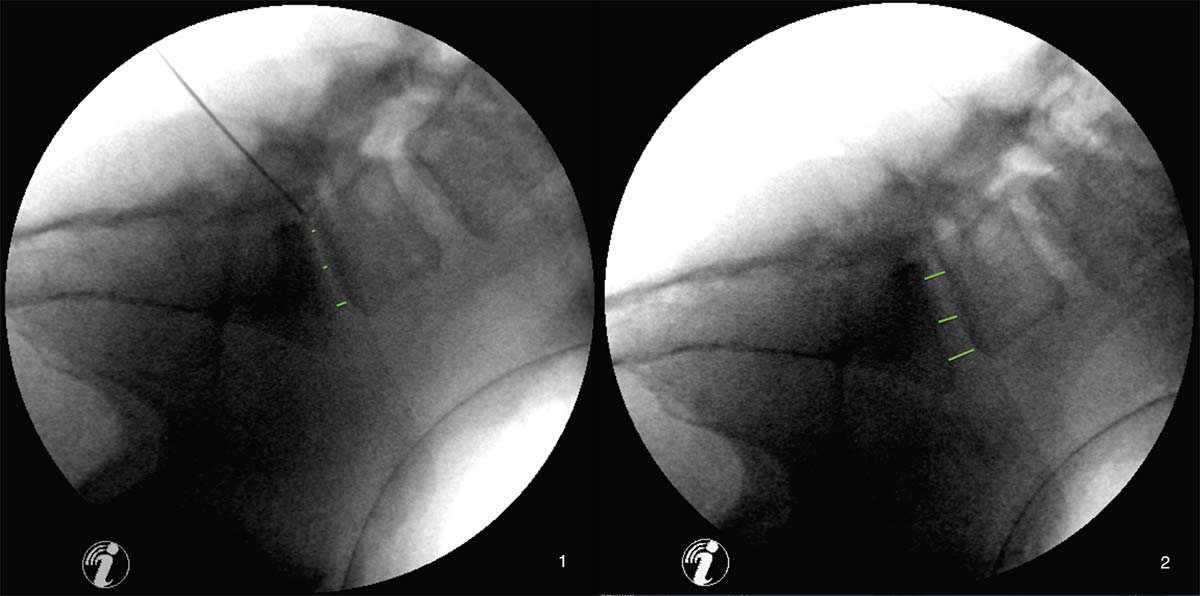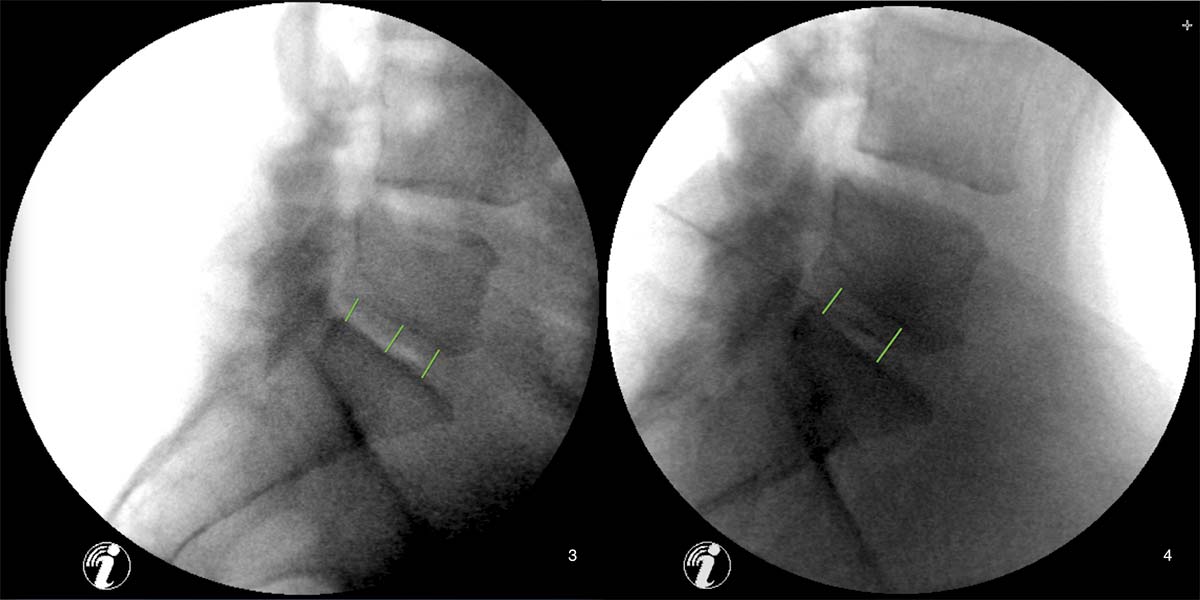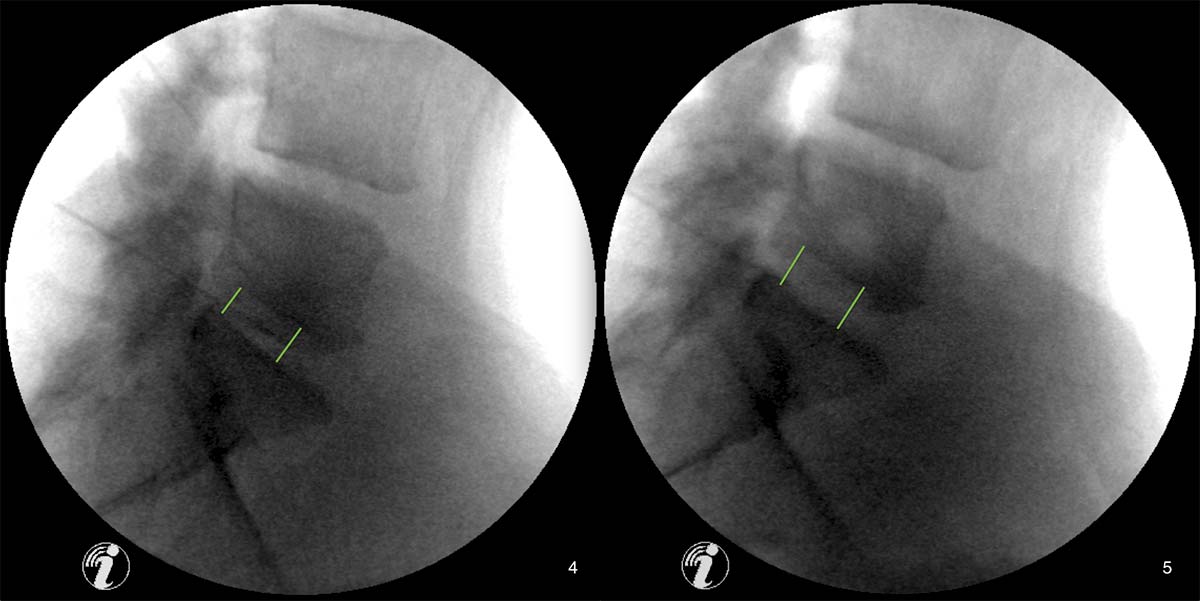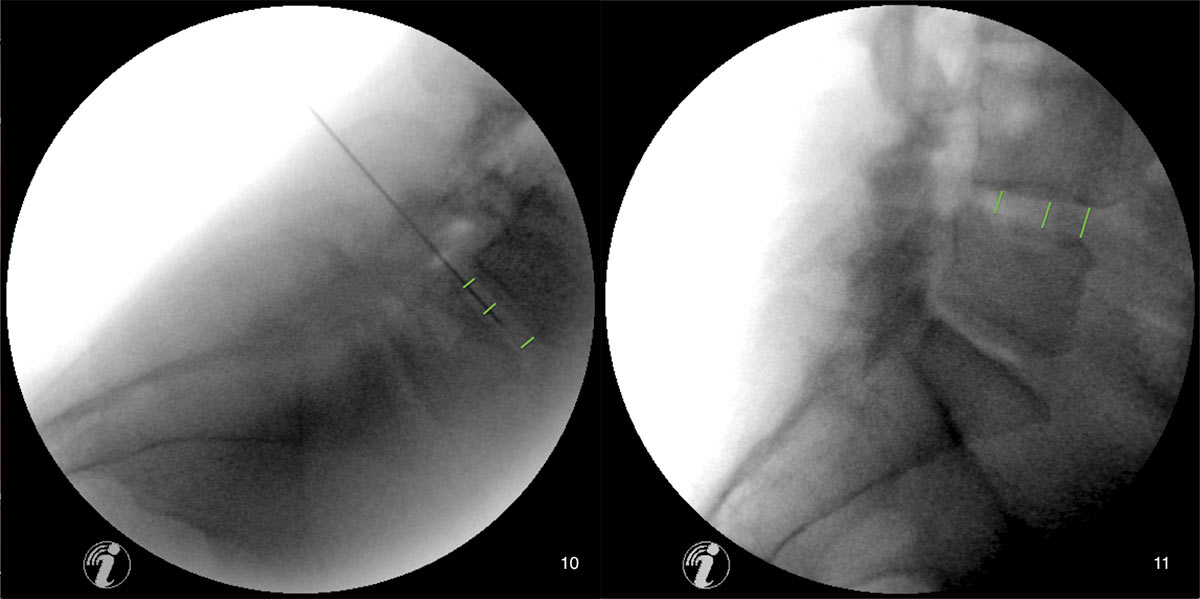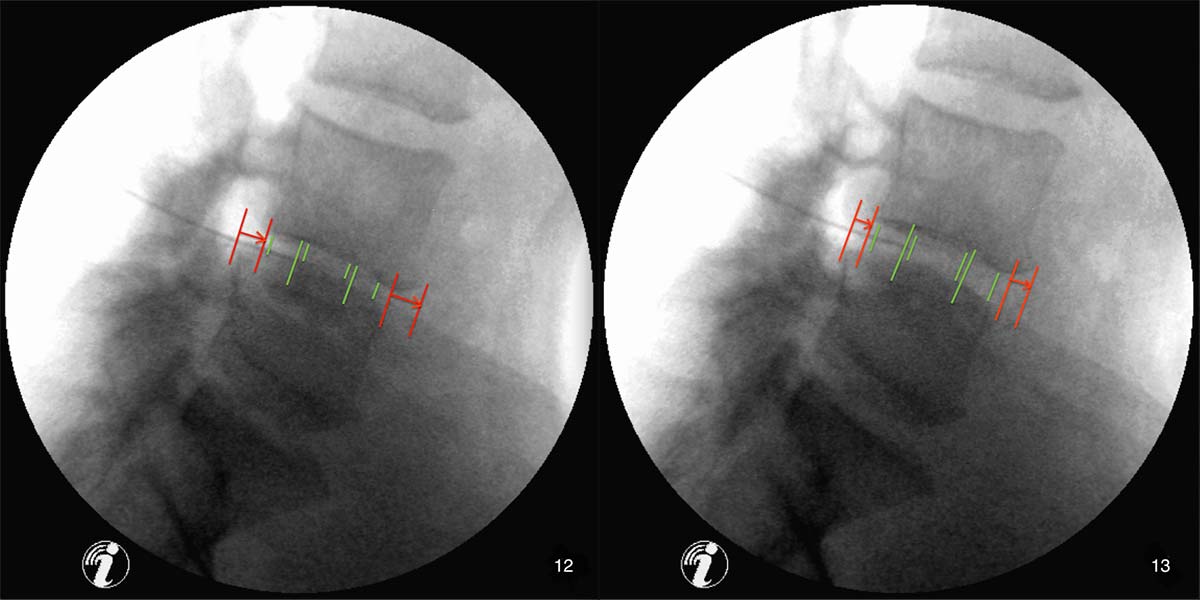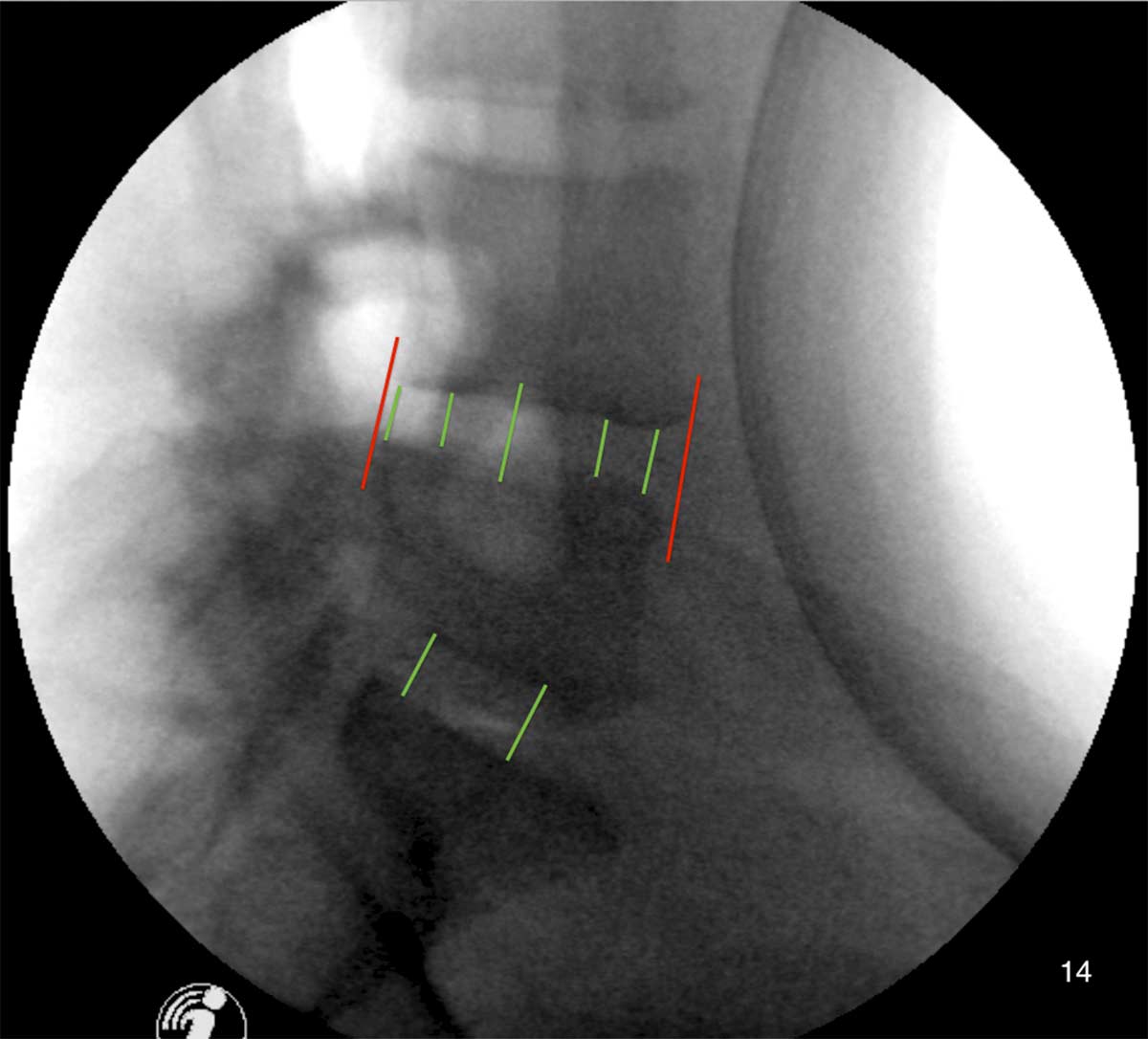RRDSS – REGENERATION AND RECONSTRUCTION OF
DISCS AND SEGMENTS OF THE SPINE
BABAYAN ARSEN
Dr. Med. sci, Prof, «Spine and Joint Center», Munich, Germany
Abstract: The modern level of medicine does not allow reverse degenerative changes and deformation of spine segments and ensure natural regeneration or reconstruction of different spine structures. Besides, conservative and especially surgical treatment methods can lead to complications and have risks of side effects. In 2004 professor Dr. MD. Arsen Babayan suggested a regenerative reconstruction method of vertebral discs that contributed to the beginning of a series of studies in this area. In 2014, MIBRAR method R, developed by professor Babayan, aimed at the regenerative reconstruction of all the musculoskeletal structures, first time in the world was successfully applied in a unique way to intervertebral discs and facet joints. These surgical interventions performed during degeneration and deformation of intervertebral discs and spine segments have all the advantages of MIBRAR method, which confirm the effectiveness of the method.
Keywords: Disc degeneration, spinal segment deformation, spondylolisthesis, regenerative reconstruction of the segment, autolog regenerative concentrate.
INTRODUCTION
Degenerative diseases of spine or its traumas often lead to deformation and limitation of segment mobility that usually have progressive character. Mobility of the spine is due to elasticity of intervertebral discs and mobility of facet joints.
With severe degree of degeneration processes, that accompanied by disc’s or the whole segment’s deformation, where conservative methods are not effective, surgical methods are used, in order to reconstruct intervertebral disc, intervertebral space and segments of spine.
RRDSS indicated for pathologies that by modern standards are treated with big invasive surgeries and under general anesthesia. In most cases patient gets implantation of intervertebral prosthesis, screws or other artificial implants that often leads to side effect complications, chronic pain syndromes, affection of the nervous system and musculoskeletal apparatus limitations. This in turns negatively affects the patient’s quality of life.
METHODS
In order to avoid all of the above complications, those surgeries could be replaced by RRDSS method. RRDSS method allows to achieve effective anatomical and stable functional restoration of the intervertebral discs and spine segments, thereby providing an opportunity for unlimited physical exercises and full-fledged maintenance of quality of life.
Under C-arm X-ray machine control or with help of Cyber-Navi-Hand, into the intervertebral disc inserted rigid hollow probe with 0,8 mm diameter. With its help, necessary micro perforations are performed by MIBRARR method. Simultaneously, through the canal of the spine cord, in intervertebral disc area, under pressure autologous concentrate is injected. The process of autologous concentrate implantation is controlled under intraoperative C-arm X-ray regime with simultaneous height increase and shape recovery of the intervertebral disc and space.
Due to implantation, intervertebral disc restores its original height and shape that calculated in advance by programming of Cyber-Navi-HandTM.
This method allows to restore height and shape of intervertebral disc during any degenerative or traumatic deformation; not only during height loss of the disc, but also during displacement of vertebrae (slipped vertebrae/spondylolisthesis, pseudo spondylolisthesis, ventrolisthesis, retrolisthesis ). Displaced vertebrae restores its original position because of height increase by vertical pressure, arising at the moment of implantation of autologous concentrate, and also tension of stretched anterior and posterior longitudinal ligaments during dilatation of intervertebral space.
In most cases it is possible to restore the height and shape of intervertebral disc, and also of the whole segment already during implantation of autologous concentrate.
After completion of transplantation of regenerative autologous concentrate into intervertebral disc under X-ray or Cyber-Navi-Hand control, another intra-articular transplantation of autologous concentrate carries out into facet joints using spinal probe. At the same time micro perforations and irritations of degenerated surface of facet joint are performed. Then autologous concentrate is injected in facet joint. X-ray control allows precisely observe the process of transplantation of the concentrate in facet joint; also clearly seen an increase in the joint space.
Autologous transplant promotes reconstruction already during surgery, and also stimulates regenerative processes. Autologous transplant consists of plasma, derived from venous blood of the patient, enriched with growth factors, anti-inflammatory factors and mesenchymal growth factors, and also from separated highly concentrated lipogenic stem cells, derived from subcutaneous fat tissue of the patient. During transplantation only fresh autologous concentrate is used, derived from venous blood of the patient and his subcutaneous fat tissue, immediately before surgery.
Example of the individual surgical planning images in the Cyber Navi Hand Software. Based on the MRI the images of the patient.
RESULTS
According to the statistics, patients get rid of complaints and symptoms during one to thirty days after the surgery, although much research shows complete regeneration with complete reconstruction minimum after three month after the surgery. Postoperative regenerative effect can progress over a year. Performed radiological examinations done from three month to year and a half, evidence of a permanent process of improving condition of the intervertebral disc and the whole spine segment.
Comparison of the images made during completion of the surgery and three month after the surgery, showing volume increase of the intervertebral discs, and also complete anatomical spine discs and segments restoration during scoliosis or other vertebrae deformations in sagittal plane, and also during this combination.
Following radiological examinations done in half a year, year and year and a half, indicate further progress in recovery of volume and shape of the discs, and also progress in anatomical recovery of the whole segment.
Example of the C-arm X-ray images of the live intraoperative control during the reconstruction of the spinal segments by the transplantation of the ARK.
Case: 2.A.DDD.7.19.20.25
Anamnesis:
Patient complaint on lower back pain with irradiation into the dorsal part of the left leg. She was diagnosed with L5/S1 hernia. For that reason she had radiofrequency nucleotomy in 2013.
After the surgery patient’s condition slightly improved, but began to have irradiating pains during movement and body position change, as postoperative complications. Patient regularly had conservative treatments, including blockade of nerve roots, injections, physiotherapy, etc. that didn’t give desired results.
Status 02.05.2016
Patient complains on circular pains in lower back, and also radiating to the left buttock and dorsal part of the left leg including hill. During any body position change, and also sitting or standing, patient is trying to get comfortable. During clinical examination visually observed curvature of the lower back and position of the buttocks.
Diagnosis:
- Condition after the radiofrequency nucleotomy;
- Hiperlordosis;
- Degenerative changes and height increase of L4/L5 discs
- Pseudoretrolisthesis of L4 vertebra;
- Postoperative, degenerative, absolute wear with bony contact of L5 and S1 discs;
- Pseudoretrolisthesis of L5 vertebra;
- Activated bilateral spondyloarthrosis of L4/L5 and L5/S1;
- Activated osteochondrosis of L4/L5 and L5/S1;
- Bilateral neuroforaminal stenosis of L4/L5 and L5/S1;
- Destabilization of lumbosacral spine;
- Abnormal sagittal balance of the spine
Surgical report:
Collection of blood from cephalic vein. Separation of autologous concentrate, enriched with mesenchymal stem cells, growth factors and anti-inflammatory factors from venous blood of the patient by CGF technology.
Collection of subcutaneous fatty tissue by liposuction. Separation of the autologous concentrate, with especially high concentration level of mesenchyme stem cells (exceeds concentration of mesenchymal stem cell of the bone marrow 1000 times).
Intradiscal transplantation of autologous concentrates CGF and Lipogems by MIBRAR® method under X-ray control in L4/L5.L5/S1 discs, with segment reconstruction because of height, volume and shape restoration of L4/L5 and L5/S1 discs.
Bilateral intraarticular transplantation by MIBRAR® method under X-ray control in facet joints of L4/L5, L5/S1, with enlargement of the joint space and reconstruction of facet joints. Epidural application of autologous concentrates CGF and Lipogems with dilatation and flushing of L4/L5 and L5/S1 foramen from both sides.
Surgery results:
In a year after the surgery patient was free of complaints and symptoms that was not shown any more in a consequence.
Control examination 10.11.2017 (in 18 months after the surgery):
Patient is feeling good, all the above described symptoms are not present, she has no limitations in everyday life and can actively do sport.
Images description:
Surgical intervention by MIBRAR® method in L5/S1 disc area
Images 1,2,3
MRI images in sagittal plane from 02.05.2016 before surgery; images presented in three different planes:
Green arrow → indicates on L4/L5 and L5/S1 with degenerative deformation, bone changes.
Image 1- central; Image 2-mediolateral left; Image 3- mediolateral right
All the images showing degenerative deformation of intervertebral disc L4/ L5, significant postoperative wear of L5/S1 disc, with bone contact of L5 and S1 vertebras (image 3), and osteochondrosis.
Images 4 and 5
MRI images in axial plane showing facet joints arthrosis. Green arrow → indicates on L4/L5 and L5/S1 with degenerative deformation, bone changes and right-sided scoliosis.
Images 8, 9 and 10 in sagittal plane; Images 11, 12 and 13 in frontal plane
Control X-ray images, taken during surgery:
- Green lines showing disc’s height
- Blue lines – condition of anterior and posterior longitudinal ligaments
- Red lines – vertebrae displacement
- Orange lines – overall height of operated segments
- Green arrows → indicate on intervertebral space of L4/L5
Image 8
Image in sagittal plane, corresponds to condition before surgery:
- deformation and height decrease in intervertebral space of L4/L5
- pseudoretrolisthesis of L4 vertebra
- neuroforaminal stenosis
- Intervertebral space of L5/S1 is almost absent
- L5/Si vertebrae contact with bone tissue
- pseudoretrolisthesis of L5 vertebra and significant neuroforaminal stenosis
Image 9
Image in sagittal plane shows intermediate result, obtained directly during surgery:
- intervertebral space increase and overall height increase in both segments,
- partial elimination of retrolisthesis due to return of L4/L5 vertebrae into the right anatomical position, and also partial reposition of anterior and posterior longitudinal ligamnts.
Image 10
Image in sagittal plane shows final intraoperative result :
- with complete reconstruction of height and shape of both L4/L5 and L5/ S1 discs,
- with significant widening of neuroformina of both segments,
- absolute elimination of retrolisthesis, due to reposition of anterior and posterior longitudinal ligaments,
- also with complete reconstruction of both segments and restoration of sagittal balance.
Both images taken in sagittal plane and submitted for comparison of the condition before and after 18 months of the surgery.
Image 14
Control X-ray image from 10.11.2017, taken in 18 months after surgery:
- as a postoperative following result – further clear increase of intervertebral space and its reconstruction
- reconstruction of both segments,
- also complete restoration of sagittal balance compare to condition before surgery (image 8) and final result, received right after the surgery (image 10).
Case: 6.A.DDD.SL.7.19.20.25
Female. DOB :14.02.69
Anamnesis:
During last 8 years patient has pain complains in lower back area while walking, turning and getting up from sitting. Shooting pains with girdle radiating pain to the legs, especially to the left leg. Constant aching pains in lumbar area. Also circular pains. Feet numbness from outside, especially on a left. In the last two years, the situation worsened.
Diagnosis:
- Degeneration and circular protrusion of L3/L4 discs.
- Deforming degeneration of L4/L5, L4/S1 discs.
- Spondylolisthesis with Ventralisation of L4 vertebral body
- Circular stenosing centro-lateral protrusion of L4/L5 caused by spondylolisthesis. Complete stenosis of L5/S1 foramina.
- Segment destabilization of L4/L5, L5/S1.
- Facet joint arthrosis on both sides of L3/L5, L4/L5,L5/S1.
Clinical examination from 17.02.16
Spine destabilization in L4-S1 area. Pain syndrome during palpation in C5-C7 and L3-S1 areas. Signs of osteochondrosis in cervical and lumbar areas, degenerative changes that destabilize the spine.
Surgical report from 29.02.16
Use of MIBRAR®
- Intradiscal, intraarticular, transplantation of autologous concentrates by perforations:
- CGF, enriched with mesenchymal stem cells, growth factors and antiinflammatory factors (derived from the venous blood of the patient)
- Lipogems, with especially highly concentreted mesenchymal stem cells (derived from the subcutaneous fatty tissue)
- In the segments area of L4/L5, L5/S1
Surgical report from 20.04.12017
Use of MIBRAR®
- Intradiscal, intraarticular, transplantation of autologous concentrates by perforations:
- CGF, enriched with mesenchymal stem cells, growth factors and anti inflammatory factors (derived from the venous blood of the patient)
- Lipogems, with especially highly concentreted mesenchymal stem cells (derived from the subcutaneous fatty tissue)
- In the segments area of L4/L5, L5/S1
Surgery results
Right after the first surgical intervention irradiating pains in the left leg, described in anamnesis were disappeared. Numbness symptoms were not observed already after three days of the surgery. Lower back pains were significantly less in a week. As a result, patient’s complaints were 80 % less. In a month after the second surgery patient had no complaints, which subsequently never manifested.
X-ray description:
Intervention by MIBRAR® method in L5/S1 discs area
Image 1: X-ray image from 29.02.2016 in the sagittal plane before the intervention of spinal probe in the L5/S1 area. Image corresponds to the condition before surgery.
Image 2: X-ray image from 29.02.2016 in sagittal plane after the transplantation of autologous CGF and Lipogems by MIBRAR® method. After the implantation in the L5/S1 area, there is a clear increase of disc’s height
Image 3: Control X-ray image from 12.05.2016 in sagittal plane corresponds to the condition after ten weeks after the surgery.
Image 4: X-ray image taken in sagittal plane on 20.04.2017 during the second surgery. Image shows further enlargement of L5/S1 disc’s height after 14 months of the first intervention by MIBRAR® method.
Image 5: X-ray image from 20.04.2017 in sagittal plane after the secondary implantation by MIBRAR® method of autologous CGF and Lipogems concentrates in L5/S1 area. I on L5/S1 disc.
Surgical intervention by MIBRAR® method in the area of L4/L5 discs immediately after the intervention in the discs area of L5/S1
Image 10: X-ray image from 29.02.2016 in sagittal plane during insertion of spinal probe in L4/L5 disc area and before implantation of autologous concentrates CGF and Lipogems. Image shows clear decrease of L4/L5 disc height and ventral displacement of vertebra.
Image 11: Control X-ray from 12.05.2016 in sagittal plane corresponds to the condition in 10 weeks after the surgery. Clear increase in disc’s height is observed, and also slight return forward of displaced L4 vertebra into the anatomically right position; there is no apparent recovery of anatomically right position of the displaced forward vertebra.
Image 12: X-ray image from 20.04.2017 in sagittal plane during insertion of spinal probe before implantation of autologous concentrates CGF and Lipogems. Compare to images 10 and 11, image 12 shows increase of disc’s height, ventralization of L4 vertebra remained the same.
Image 13: Control X-ray image from 20.04.2017 in sagittal plane shows clear disc’s height increase and partial return of displaced L4 vertebra to the anatomically right position right after the implantation of autologous concentrates CGF and Lipogems..
Image 14: Control X-ray from 14.07.2017 in sagittal plane corresponds to the condition of 3 months after the surgery. Full restoration of height and shape of discs L4/L5 and L5/S1 cab be observed, and also complete return of displaced L4 vertebra to its anatomically right position without ventrolisthesis features.
Overall result of the surgery corresponds to the complete reconstruction of both segments of L4/L5 and L5/S1

